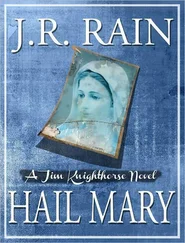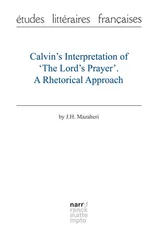Helge Fauskanger - J.R.R. Tolkien’s Lord’s prayer and Hail Mary in Quenya - Syntactical and Etymological Analysis
Здесь есть возможность читать онлайн «Helge Fauskanger - J.R.R. Tolkien’s Lord’s prayer and Hail Mary in Quenya - Syntactical and Etymological Analysis» весь текст электронной книги совершенно бесплатно (целиком полную версию без сокращений). В некоторых случаях можно слушать аудио, скачать через торрент в формате fb2 и присутствует краткое содержание. Жанр: Языкознание, на английском языке. Описание произведения, (предисловие) а так же отзывы посетителей доступны на портале библиотеки ЛибКат.
- Название:J.R.R. Tolkien’s Lord’s prayer and Hail Mary in Quenya: Syntactical and Etymological Analysis
- Автор:
- Жанр:
- Год:неизвестен
- ISBN:нет данных
- Рейтинг книги:5 / 5. Голосов: 1
-
Избранное:Добавить в избранное
- Отзывы:
-
Ваша оценка:
- 100
- 1
- 2
- 3
- 4
- 5
J.R.R. Tolkien’s Lord’s prayer and Hail Mary in Quenya: Syntactical and Etymological Analysis: краткое содержание, описание и аннотация
Предлагаем к чтению аннотацию, описание, краткое содержание или предисловие (зависит от того, что написал сам автор книги «J.R.R. Tolkien’s Lord’s prayer and Hail Mary in Quenya: Syntactical and Etymological Analysis»). Если вы не нашли необходимую информацию о книге — напишите в комментариях, мы постараемся отыскать её.
J.R.R. Tolkien’s Lord’s prayer and Hail Mary in Quenya: Syntactical and Etymological Analysis — читать онлайн бесплатно полную книгу (весь текст) целиком
Ниже представлен текст книги, разбитый по страницам. Система сохранения места последней прочитанной страницы, позволяет с удобством читать онлайн бесплатно книгу «J.R.R. Tolkien’s Lord’s prayer and Hail Mary in Quenya: Syntactical and Etymological Analysis», без необходимости каждый раз заново искать на чём Вы остановились. Поставьте закладку, и сможете в любой момент перейти на страницу, на которой закончили чтение.
Интервал:
Закладка:
care, verb do , make . The Etymologies lists a stem kar- make , do or make , build , construct (LR:362). A Quenya verb karin I make , build is quoted; the same verb (in plural form) occurs in WJ:391, in the phrase i karir quettar ómainen, those who make words with voices . (The difference in spelling, kar- rather than car-, is of no importance; this persistent inconsistency is found throughout Tolkien’s post-LotR material, and in theory both cand krepresent the Tengwa calma in the "original manuscripts".) The form karir( carir) exemplifies the plural form of the aorist tense, in this case used to denote a "timeless truth". Car- is an example of a so-called basic verb, formed directly from a root (in this case kar-) without adding any ending (like the very frequent verbal endings - taand - ya). In the primitive language, basic verbs could receive the ending *- iassociated with the aorist (though whether this ending actually forms the aorist, or it is just a kind of stopgap and the mere absence of another ending indicates that the verb is to be understood as an aorist, is not entirely clear). In Quenya, final short *- iin the primitive language came out as - e(cf. for instance are day from primitive ari, LR:349 s.v. ar 1-). The primitive aorist * karilikewise became careas in the text before us, but if one adds any ending so that *- iis not final, it retains its original quality: hence plural karir( carir) rather than * karer. As for semantics, the difference between aorist care, cari- and the continuative/"present" tense * cáramay perhaps be compared to the distinction between English does as opposed to is doing (or makes vs. is making ). If we have correctly interpreted the sentence na care indómelyaas a subject-less construction * wish that [one] does thy will , it becomes clear why the aorist is used here: Much as in the phrase i karir quettar, where the idea is that the Elves (always, permanently, generally) make words, the idea is here that God’s will should (always) be done. The aorist denotes an "indefinite" action, unlimited or unmarked as to time. On the other hand, * na cára indómelyawith the continuative form of car- would perhaps rather be a prayer for a specific situation, expressing a wish that God’s will is being done in one particular matter. – Not all of the aorist forms in the text before us behave quite like we would expect from other examples. Peculiarly, the ending - edoes not seem to become - i- when an ending is added. One example of a "well-behaved" aorist has already been quoted several times: The late source reproduced in WJ:391 (ca. 1960) indicates that the plural aorist of car- is carir(there spelt karir). This agrees with much earlier material, far predating the text before us. Yet in the Lord’s Prayer, where what is essentially the same verb occurs with a prefix, we find the form úcarer(q.v.) Why not * úcarir? Likewise, apsenet"[we] forgive them", probably another aorist, might be expected to appear as * apsenitinstead; because of the suffix - t them the original ending *- iis not final and therefore should not change to - e. Yet these examples are not unique. In SD:290, reproducing a source from ca. 1945-46, we have the strange form ettulerfor * come forth . Again we might expect * ettulirinstead, according to the system Tolkien had used in the Etymologies (of ca. 1935+; LR:395 s.v. tul- has tulinrather than * tulenfor I come ) and the early LotR drafts (cf. silevs. pl. silirrather than * silerin RS:324). The published LotR contains no example of an aorist, but interestingly, the forms carnemírië red-jeweled and airetári holy-queen that do occur in this work seem to display the same phonological oddity: The eof carneand airerepresents primitive i(ancestral forms karani red , * gaisi holy ), and where it is not final it "ought" to remain i. These examples, already discussed in the entry aireabove, should evidently not be seen as casual "mistakes" made by Tolkien. Rather it seems that in the latter half of the forties and in the early fifties, his evolution of Quenya was in a phase where the original quality of - edescended from primitive short - iwas nowhere preserved. Perhaps he imagined that extensive analogical leveling had taken place, so that though original - i"properly" became - eonly when final, the new quality of the vowel was eventually introduced also where it was not final. Hence carir make as the pl. aorist of the verb car- was changed to # carerbecause of analogy with care makes (itself < * kari). But it would seem that Tolkien later (not later than 1959-60) changed his mind yet again and reestablished the earlier system, since the aorist karir/ carirrather than ** karerreappears in a source dating from about 1960 (WJ:391). Likewise Tolkien changed carnemíriëto carnimíriëin the revised edition of LotR (1966). Airetárewas kept in this form and not altered to * Airitári, but as we have already discussed, the initial element was reinterpreted to mean sanctity rather than holy .
cemende, inflected noun: (as?) on earth . The Silmarillion Appendix has an entry " kemen earth in Kementári ; a Quenya word referring to the earth as a flat floor beneath menel , the heavens". In the Etymologies , the stem kem- is defined soil , earth , yielding the Quenya words " kén ( kemen )" (LR:363). This probably does not mean that kénhas an alternative form kemen. When Etym. was written, the Quenya genitive ending was -( e) n, only later changed to - o, q.v. In some cases the words in - enare explicitly identified as genitive singulars; for instance, ailin pool , lake has the "g.sg." ailinen(LR:329 s.v. ay-). As for the stem kem-, Tolkien probably meant the Primitive Quendian word for soil , earth to be * keme, producing Common Eldarin * kêm(with endings * kem-). In Quenya * kêmbecame kénbecause High-Elven did not permit final - m, so that it had to be changed to the closest "permissible" sound, namely - n. Yet Quenya allowed medial m, so in this position the consonant remained unchanged; compare the stem talam producing Q talan floor , plural talami(LR:390). Hence in Etym. the word for earth is kénwith a genitive singular kemen. As mentioned above, Tolkien later changed the genitive ending to - o, so we would expect kemento become * kemo. However, the genitive kemenappeared in the narratives as part of Yavanna’s title Kementári Queen of the Earth , literally * Earth’s-Queen . Perhaps Tolkien was unwilling to change this to * Kemotári. This may be the reason why he reinterpreted kemen, making it the nominative form rather than the genitive; this would require nothing more dramatic than postulating an "extended" stem *kemen- (formed by means of ómataina , sc. reduplication of the stem-vowel [WJ:417], and a suffixed - n ). Hence Kementáricould stand and still be translated Queen of the Earth ; the literal meaning had only changed from * Earth’s-Queen to * Earth-Queen , with minimal semantic impact. – Kemen, cemenhere appears in the strange inflected form cemende. This might seem to be a locative form of some kind, though it differs from the normal, well-attested locative in - sse(that also occurs in this text; see lúmesse). It is unclear whether the ending is - deor longer - nde(if the latter, it is here simplified to - desince the word already ended in - n); see Erumande. If the case in -( n) deis not a locative, it must be some kind of "comparative" case, indicating that cemendeand Erumandeare being compared to one another ("on earth as in heaven). It is interesting to notice that an ending - ndonsignifying as or like occurs in some "Qenya" poems from the early thirties: wilwarindon as a butterfly , taurelasselindon like leaves of forests (MC:213-215; compare wilwarin butterfly , # taure-lasseli forest - leaves ). It could be that - ndein the text before us is a later variant of this early - ndon [14] In VT43, cemende is interpreted as cemen + - se , the latter element being a short locative ending which turns into - ze > - de following n . As I point out elsewhere, this development seems pretty ad hoc; normally ns would be expected to turn into a double ss , not nd .
.
Интервал:
Закладка:
Похожие книги на «J.R.R. Tolkien’s Lord’s prayer and Hail Mary in Quenya: Syntactical and Etymological Analysis»
Представляем Вашему вниманию похожие книги на «J.R.R. Tolkien’s Lord’s prayer and Hail Mary in Quenya: Syntactical and Etymological Analysis» списком для выбора. Мы отобрали схожую по названию и смыслу литературу в надежде предоставить читателям больше вариантов отыскать новые, интересные, ещё непрочитанные произведения.
Обсуждение, отзывы о книге «J.R.R. Tolkien’s Lord’s prayer and Hail Mary in Quenya: Syntactical and Etymological Analysis» и просто собственные мнения читателей. Оставьте ваши комментарии, напишите, что Вы думаете о произведении, его смысле или главных героях. Укажите что конкретно понравилось, а что нет, и почему Вы так считаете.












